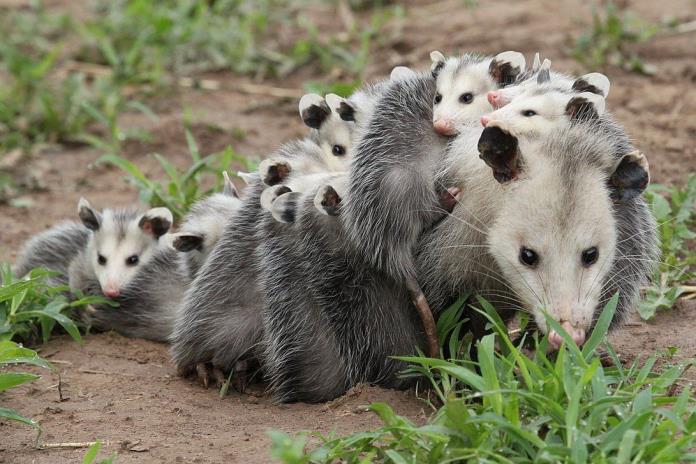Introduction
The tlacuache, commonly known as the opossum, is more than just a nocturnal scavenger spotted near garbage bins or wandering suburban backyards. In Mexico and other parts of Latin America, the tlacuache is a cultural icon, a creature of myth and ecological importance. From its ancient representation in Aztec mythology to its vital role in natural ecosystems, the tlacuache has earned a place in both legend and science.
Often misunderstood, the tlacuache has a unique biological makeup, fascinating behaviors, and a deep-rooted significance in indigenous storytelling. In this article, we’ll explore its origin, characteristics, ecological role, cultural relevance, and ongoing relationship with modern society.
What is a Tlacuache?
The word “tlacuache” comes from the Nahuatl term “tlacuatzin”, which refers to a small, burrowing or climbing marsupial. In English, it is most commonly referred to as the Virginia opossum (Didelphis virginiana), the only marsupial native to North America.
Biological Characteristics
- Scientific Name: Didelphis virginiana
- Family: Didelphidae
- Habitat: Forests, fields, and even urban areas across North and Central America.
- Diet: Omnivorous – eats insects, fruits, small animals, and garbage.
- Reproduction: Females carry their young in a pouch (like kangaroos).
One of the tlacuache’s most famous traits is its ability to “play dead” or “play possum”. This defense mechanism, known as thanatosis, can fool predators into losing interest, thinking the tlacuache is already dead or diseased.
Role in Ecosystems
Despite being seen as pests by some, tlacuaches provide numerous ecological benefits:
Natural Pest Control
Tlacuaches consume harmful insects such as ticks, cockroaches, and beetles. A single tlacuache can eat thousands of ticks in a season, indirectly reducing the spread of Lyme disease and other tick-borne illnesses.
Cleaning Up the Environment
As scavengers, tlacuaches help by eating dead animals, spoiled fruits, and organic waste. Their consumption of decaying matter helps keep the environment clean and reduces disease transmission.
Seed Dispersal
By consuming fruits and excreting the seeds elsewhere, tlacuaches contribute to plant reproduction and forest regeneration.
Tlacuache in Mesoamerican Mythology
The tlacuache has a rich presence in Mesoamerican cultures such as the Aztec, Maya, and Zapotec civilizations. These cultures didn’t just see the animal as a scavenger—they revered it as a symbol of cleverness, survival, and sacrifice.
The Myth of Fire
One of the most famous legends tells the story of how the tlacuache brought fire to humanity. According to this myth, when the gods first created the world, fire belonged only to the gods or to a jealous tribe. Humans lived in darkness and cold.
The clever tlacuache, seeing the suffering of mankind, decided to help. He snuck into the fire camp and hid a burning ember in his bushy tail. As he ran back to deliver the fire, his tail caught fire and lost all its fur—explaining why modern opossums have hairless, rat-like tails. This selfless act made the tlacuache a hero in indigenous lore.
Cultural Symbolism
In Mexican folklore, the tlacuache represents more than just cleverness:
Trickster and Teacher
Like the coyote in other indigenous cultures, the tlacuache is sometimes portrayed as a trickster—mischievous but wise. He teaches lessons, often through mistakes or humorous antics.
Survivor Spirit
The tlacuache’s ability to adapt, play dead, or escape danger makes it a symbol of resilience and survival. Many see it as a representation of those who endure hardship and continue thriving despite the odds.
Artistic Representation
From pre-Columbian pottery to modern children’s books and cartoons, the tlacuache appears in countless artistic expressions. Even today, it is depicted in folk art and murals across Mexico.
The Tlacuache in Modern Society
As urbanization spreads, tlacuaches have learned to live in cities and towns, adapting quickly to human presence.
Coexistence with Humans
Many people still consider the tlacuache a pest due to its scavenging habits. However, environmental groups have begun educating communities about the animal’s importance in maintaining ecological balance.
For example, in cities like Mexico City, tlacuaches are occasionally rescued, treated, and released back into protected areas. Public awareness campaigns now promote respect for native wildlife and discourage harm toward the species.
Medical Interest
Interestingly, researchers have studied tlacuache immunity due to their resistance to snake venom and certain diseases. Their low body temperature and strong immune system make them intriguing subjects in medical and genetic research.
Misconceptions and Superstitions
Despite their usefulness, tlacuaches are often misunderstood. Some people fear them, thinking they are aggressive or diseased.
Debunking Myths
- Myth: Tlacuaches are dirty and dangerous.
- Fact: They are very clean animals that groom themselves regularly.
- Myth: They carry rabies.
- Fact: Due to their low body temperature, they are highly resistant to rabies.
- Myth: They attack humans.
- Fact: They are shy and defensive; most confrontations involve the animal trying to escape or play dead.
Tlacuache in Literature and Popular Culture
The tlacuache has been featured in various Latin American children’s tales, animated shows, and even satirical political cartoons. In recent years, its image has been reclaimed as a symbol of Mexican identity, indigenous roots, and even ecological awareness.
For instance, some independent Mexican publishers and cartoonists have created characters based on the tlacuache to educate children about nature, storytelling, and traditional values.
Table: Key Facts about the Tlacuache
| Feature | Detail |
| Scientific Name | Didelphis virginiana |
| Common Names | Tlacuache (Mexico), Opossum (USA) |
| Native Habitat | North and Central America |
| Diet | Omnivorous – fruits, insects, carrion |
| Cultural Significance | Hero of fire myth, symbol of survival |
| Defense Mechanism | Thanatosis (playing dead) |
| Tail Description | Hairless, prehensile (for grasping branches) |
| Threat Level | Low – rarely aggressive |
Conclusion
The tlacuache far from being just an urban nuisance, is a deeply symbolic ecologically significant and biologically fascinating creature. It serves as a bridge between ancient Mesoamerican tradition and modern scientific understanding. Through its stories, we learn about sacrifice wit and resilience. Through its biology, we see an animal that has adapted to both nature and human development with remarkable flexibility.
Respecting and protecting the tlacuache not only honors the cultural heritage of indigenous civilizations but also supports biodiversity and environmental health. Next time you see this odd little marsupial waddling across the road or rummaging through leaves, remember—you’re looking at a living legend.




